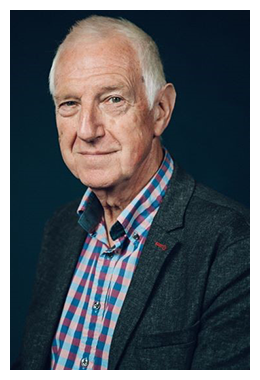"Why hasn’t someone thought of this before?"
Effective Child Protection was a pilot project established to evaluate various approaches to frontline child protection practice. The pilot aimed to help us understand what worked and whether this could be implemented in other Local Authorities.
The Effective Child Protection model has been evaluated at two key points.
The interim evaluation took place in February and March 2020 as the COVID-19 pandemic hit. This coincided with the project’s mid-point. This included three different evaluation themes. These were:
- Evaluation of the development of practice mentoring
- Evaluation of the experience of practitioners
- Evaluation of the impact of Effective Child Protection in Case Conferences
The final evaluation took place in March 2022 and included a series of in-depth semi structured interviews with practitioners and managers from various agencies.
The final evaluation report was published in August 2022.
This can be downloaded from this page as a Full Report as well as shorter extracts of the Executive Summary, Project Data Sets and Interim Evaluation:
- Effective Child Protection Project Evaluation - Executive Summary (pdf)
- Effective Child Protection Project Evaluation - Full Report (pdf)
- Effective Child Protection Project Evaluation - Interim Evaluation Summary (pdf)
- Effective Child Protection Project Evaluation - Project Data Sets (pdf)
A video of the key points is also available. In this video, report author Bruce Thornton introduces his findings:
The report made the following recommendations
- Reinforcing the adoption of Change and Measuring (Steps to Change) as the single areas that makes the most difference.
- Continue to review the ‘What Needs to Change’ and ‘Measurement’ to ensure that they maintain an individual focus relating to individual families and their circumstances.
- The project has been successful in helping many families to change and care for their children. Continue to develop and review a range of differing methods of encouraging and enabling change.
- Reinforcing and embedding mentoring to assist and reinforce the team manager’s role and responsibilities. Mentoring has proved a key element in developing social worker’s skills in reflection, communication and involvement of families.
- Developing advice for other local authorities regarding the use of separate components of ECP to fit with their existing system. The key components are ‘Change’ and ‘Measure’. These could fit alongside existing processes.
- Using the Risk 2 ’Reason for Decision’ analysis in conferences to summarise conclusions.
- Using the grid from Risk 2 in Conferences and Core Groups to enhance communication.
- Using Graded Care Profile and Home Conditions to inform ‘Steps’ and ‘Change’ statements.
- Continued promotion of the methods and results. Initially across North Wales and then to a wider audience.

This Evaluation was undertaken by Bruce Thornton, independent consultant and trainer in social care. This built on the interim evaluation where he looked at the reports and minutes of Child Protection Case Conferences, before and after the introduction of ECP.
Bruce is a registered social worker and qualified in 1971. His background has predominantly been in child care and he has held social work, management and training posts in local authorities. He has lectured on a professional social work course and was joint author of Community Care’s Guide to the Children Act 1989.
Since 1992 he has been a freelance trainer and service developer in both Wales and England. He was joint author of the Gwynedd Risk Model and has a particular interest in the development of child protection that has a practical application for local authorities.
His familiarity with the threshold element of Effective Child Protection provided a good base for undertaking the Evaluation. He was an understand the background of the Effective Child Protection project but has not been involved in its development or implementation.